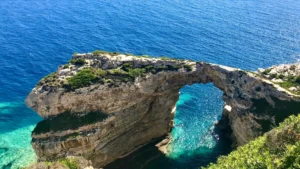Myanmar currently is one of the most sought after holiday destinations, if not the most. Not only in Asia, world-wide. So much so that the Minister of Hotels and Tourism in a recent interview revealed that the number of international tourists practically doubled between 2012 to 2013, skyrocketing from 1 million to 2 million. Subsequently tourism income showed a hefty increase as well. Moreover, the end is certainly not near: on the contrary, this rapid development heralds the dawn of Myanmar’s tourism revival after having been in hibernation for over some four decades.
The advantage thereof is that Myanmar remained quite authentic, its population invariably showing keen interest in foreigners, while being extremely hospitable. It is also intensely safe to travel through.
Furthermore, steeped in history this foremost Buddhist country is famous for the multitude of awe-inspiring, jaw-dropping temple complexes, with the well-known Shwedagon Pagoda in Yangon (formerly Rangoon) and Bagan (or Pagan) considered its crown jewels.
However, infrastructure and transport limitations of the vast, stretched country – in form resembling a crowing Rooster, with majestic mountains to the North and East, and a long coastline with unspoiled beaches from the West to the South- dictate the movements of tourists who usually are traveling on a narrow time budget. Moreover, Myanmar, not unlike Vietnam, possesses a handful, widely spaced must-see highlights, putting another constraint on their holiday journey. Thus, with starting point Yangon, most tourists fill their itinerary with at least three major tourism destinations, formed by a triangle in the heart of the country: Mandalay, Bagan (both Mandalay Division) and Inle Lake (an hour’s drive from Taunggyi, Shan State’s capital); for those with a few extra days to spare, rest, relaxation and water sports activities await them at Ngapali beach, reputedly Myanmar’s best (Rakhine State).
This means that, above and beyond lengthy traveling and sightseeing, for most tourists time left over for soft adventure is scarce. Hence, inventive tour operators concentrated this kind of adventure at or close by said touristic hot spots, thereby saving time for and catering to the needs of their clientele; killing two birds with one stone, so to speak.
For instance, great trekking can be undertaken from Inle Lake (starting from Kalaw, a former British colonial hill station) into the, rather logged hills and through fascinating, albeit poor tribal villages. Attractive motorboat tours can be undertaken from Nyaung Shwe to view eccentric ‘leg-rowing’ fishermen, floating gardens and other river life, and visit monasteries, stilt and craft villages (including ethnic hill tribe villages). For the more intrepid traveller a self-guided canoe trip through the villages is equally rewarding.
In fabled Mandalay, the heart of Myanmar, even its royal cultural heritage offers a soft adventure to undertake: climbing Mandalay Hill, a mere 1,730 steps up (give or take a few) on covered, swirling stairways, paying tribute to Buddha at the various Pagodas and Monasteries along the way.
The inner city area offers easy walking cum sightseeing, which similarly could be done at another nearby, former capital of Burma, Amarapura (circa 10km south of Mandalay). It’s also famous for its 1.5km teak bridge (U Bein), the longest in the world, lending itself for a nice stroll. Another interesting ancient city in Mandalay’s vicinity, Mingun, on the opposite bank of the Ayeyarwady (formerly Irrawaddy) can be accessed by waterway only, a pleasant cruise to experience a preview of river life.
Alternatively go for a hike up the stupa-studded hilltops of Sagaing and down along pathways all the way leading to the river for the adventurer.
Finally, upon leaving the Mandalay region, for the less faint-hearted and vertigo free amongst our readers a spectacular train ride over the Goke Hteit viaduct (constructed around 1900 by British engineers) could be labelled ‘for true adventurers, only’.
For many a tourist, the last stop, Bagan, is the pinnacle of a visit to Myanmar. It contains the remains of the old capital Pagan, scattered across a vast plain. Undoubtedly the view of the numerous pagodas shrouded in the early morning mist will stay for a long time, reinforced by a balloon ride over the area. For those who prefer a more earthly approach, a bike tour or a horse drawn cart ride might as well create the same impression.







